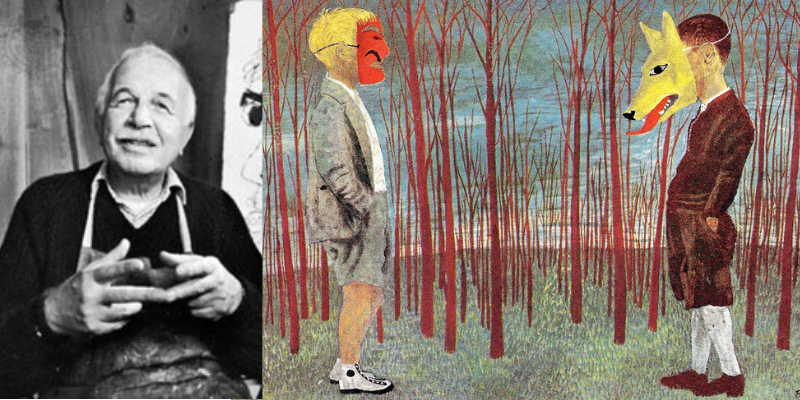12th September 2023. ON THIS DAY.
“The artist must operate on the assumption that the public consists in the highest order of individual—that he is civilized, cultured, and highly sensitive both to emotional and intellectual contexts…And while the whole public most certainly does not consist in that sort of individual, still the tendency of art is to create such a public—to lift the level of perceptivity, to increase and enrich the average individual’s store of values.”
– Ben Shahn.
Introduction
Ben Shahn was unwavering in his dedication to highlighting the difficulties of American workers, immigrants, and marginalised groups. His innate hatred of oppression and injustice sprang from his own family’s history of exile and relocation. Shahn’s artistic development took place against the tumultuous backdrop of the turbulent 1930s, a time characterised by political and economic corruption that he closely observed and reflected through his distinct Social Realist style.
Early Life and Background
Ben Shahn was born in Lithuania in 1898, but his family was forcibly ejected from their home country in 1902 when his father was banished to Siberia for alleged revolutionary activity. The family sought safety in Brooklyn, New York, where Shahn’s early years were shaped by his family’s experiences as immigrants and by the fight to survive in a foreign country. His paintings would be greatly influenced by these early experiences, which helped him develop empathy for those who are marginalised in society.
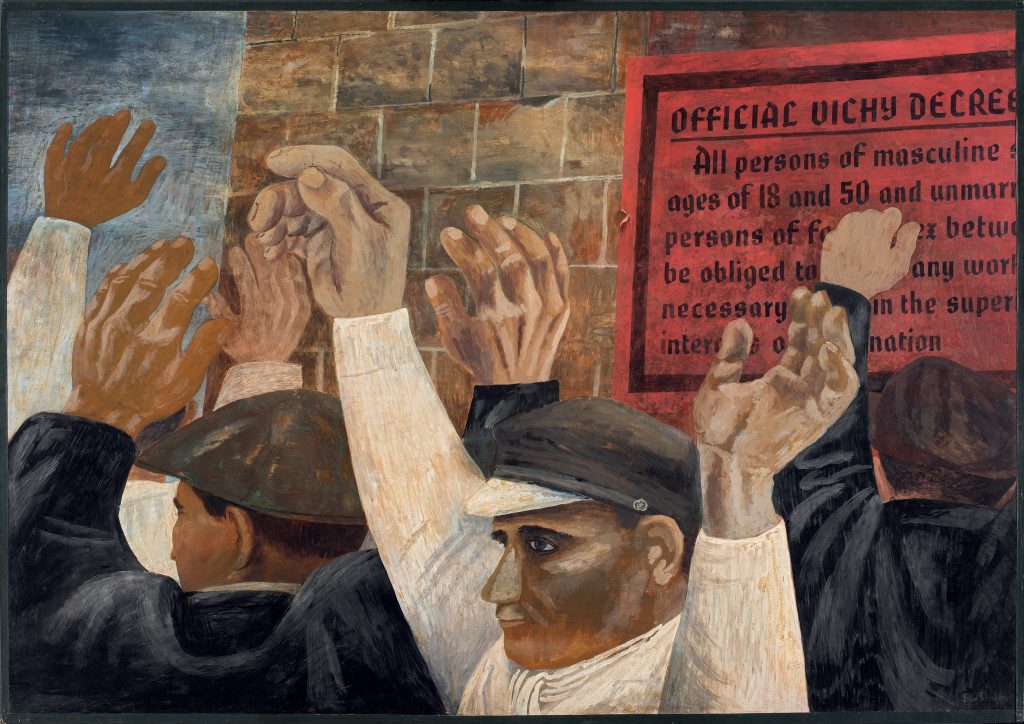
Courtesy: Museo Thyssen
Ben Shahn’s Art
The Passion of Sacco and Vanzetti
The representation of Italian-American anarchists Bartolomeo Vanzetti and Nicola Sacco, who were found guilty of murder in 1927, in one of Shahn’s earliest and most divisive works. The men were shown in chains in Shahn’s artwork, which sparked anger around the world owing to the dubious circumstances behind their conviction and the pervasive anti-ethnic prejudice. Shahn’s works were on show in 1932 at the MoMA exhibition “Murals by American Painters and Photographers.” Shahn defended the authenticity of his artwork and its legitimacy to be displayed in public despite criticism from others who thought it was “Communistic.” His reputation as a Social Realist painter unafraid to address contemporary challenges was cemented by this crucial turning point.
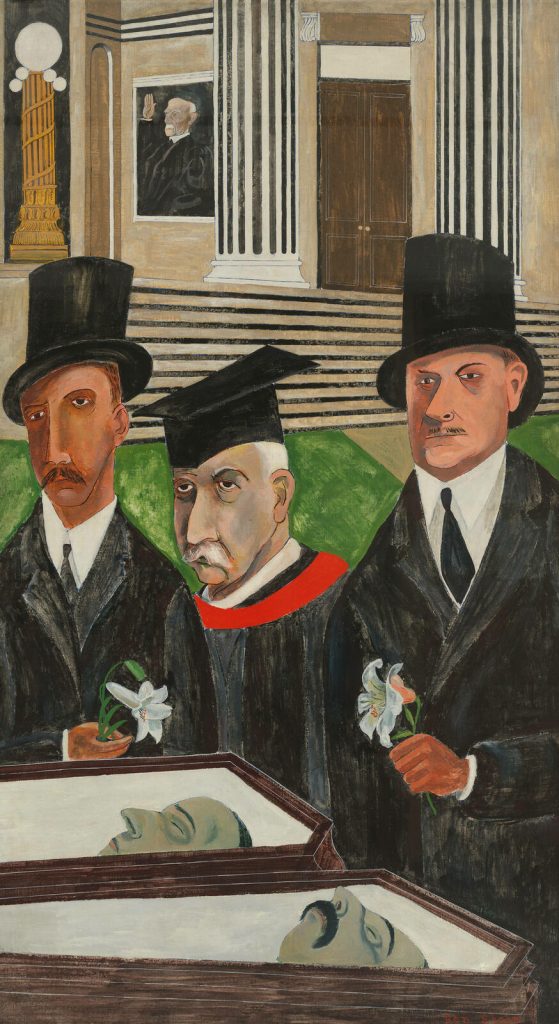
Courtesy: Whitney Museum of American Art
This Is Nazi Brutality
Shahn refocused his artistic involvement on producing political posters for the Office of War Information’s Graphic Arts Division. His famous lithograph, “This Is Nazi Brutality,” featured a hooded, chained man surrounded by a red brick wall and set against a forebodingly gloomy sky. The purpose of this disturbing image was to call attention to the 1942 destruction of Lidice, Czechoslovakia, and the horrors committed by the Nazis. Shahn’s poster pleaded for Americans to recognise the atrocities taking place in Europe and aid the Allied forces. Shahn’s uncompromising dedication to his subjects and his combative demeanour persisted despite officials first rejecting his plans as “too violent” and “not appealing enough.”
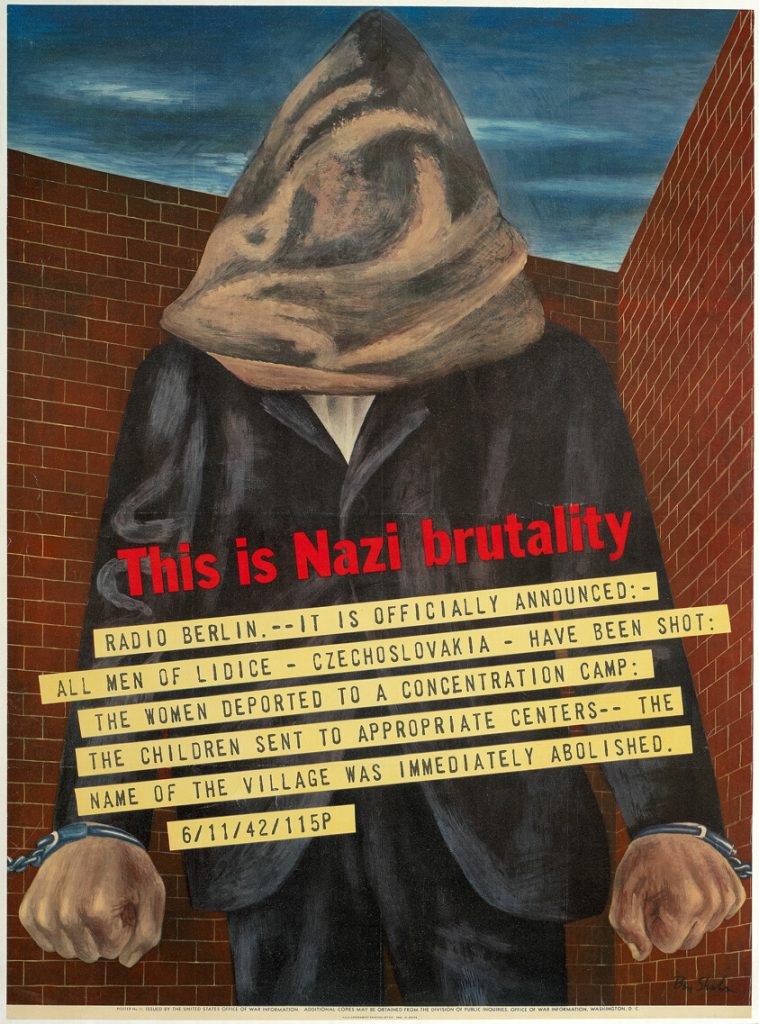
Courtesy: The Art Institute of Chicago
The Red Stairway
In “The Red Stairway,” Shahn provided a stirring commentary on devastation, optimism, and the human spirit’s fortitude in the face of difficulty. A figure emerging from a crater and an elderly man using crutches mount a crimson stairway, representing Europe’s post-war reconstruction efforts. Shahn was able to express his emotional response to the world while preserving a narrative and figurative style as he shifted towards a more “personal realism” in the postwar era.
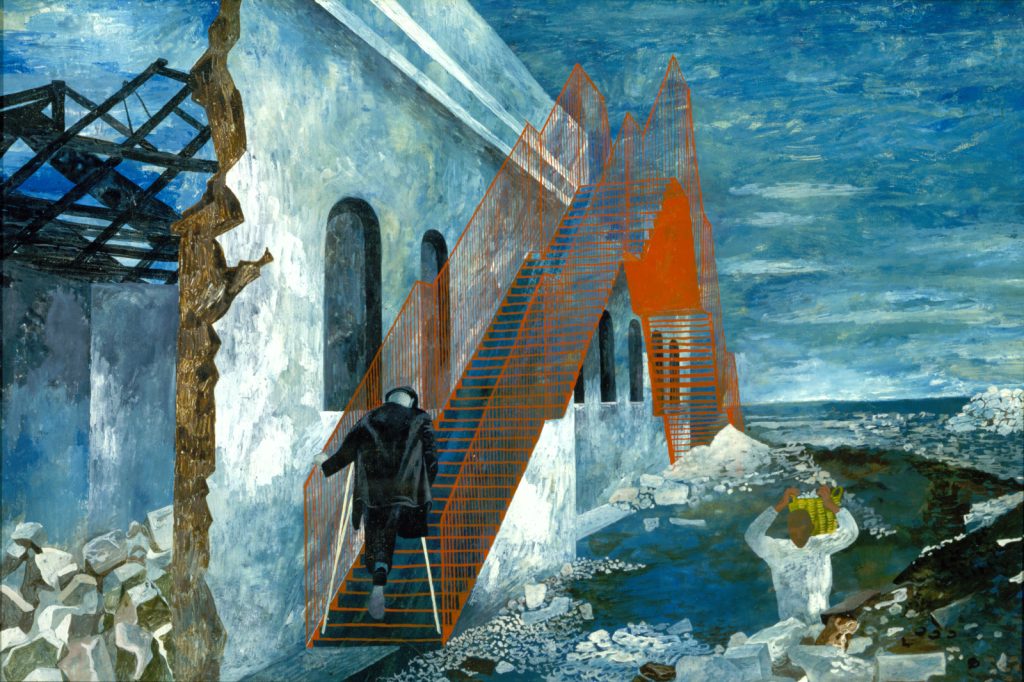
Courtesy: Saint Louis Art Museum
The Shape of Content
This collection of essays by the American artist examines the function of the artist within the institution, the value of nonconformity in art, and the requirement for a synthesis between form and substance. It is based on his Charles Eliot Norton Lectures delivered at Harvard in 1956–1957. Shahn emphasises the importance of creating a welcoming climate for artist-teachers in educational institutions. These essays present perceptive viewpoints on the condition of the arts and the role of the artist in society.
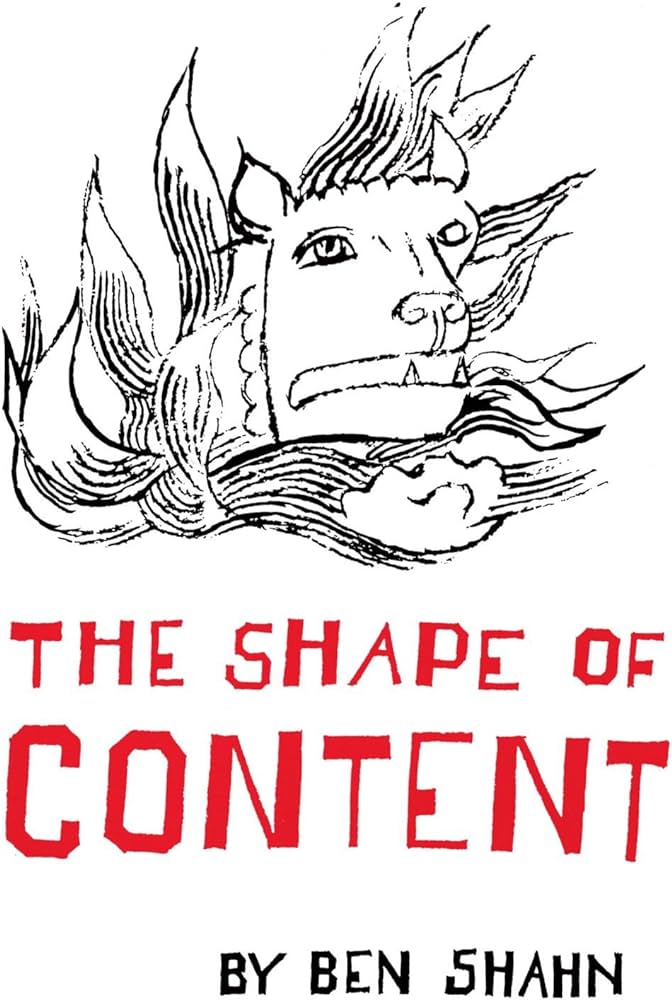
Courtesy: Amazon
Lettering
The infamous posters of Ben Shahn depict a certain type of lettering followed by the artist. It is his own creation, hence this type of lettering is now called the “Ben Shahn Lettering”. People use it to date and it is a style of lettering with a fan base of its own.
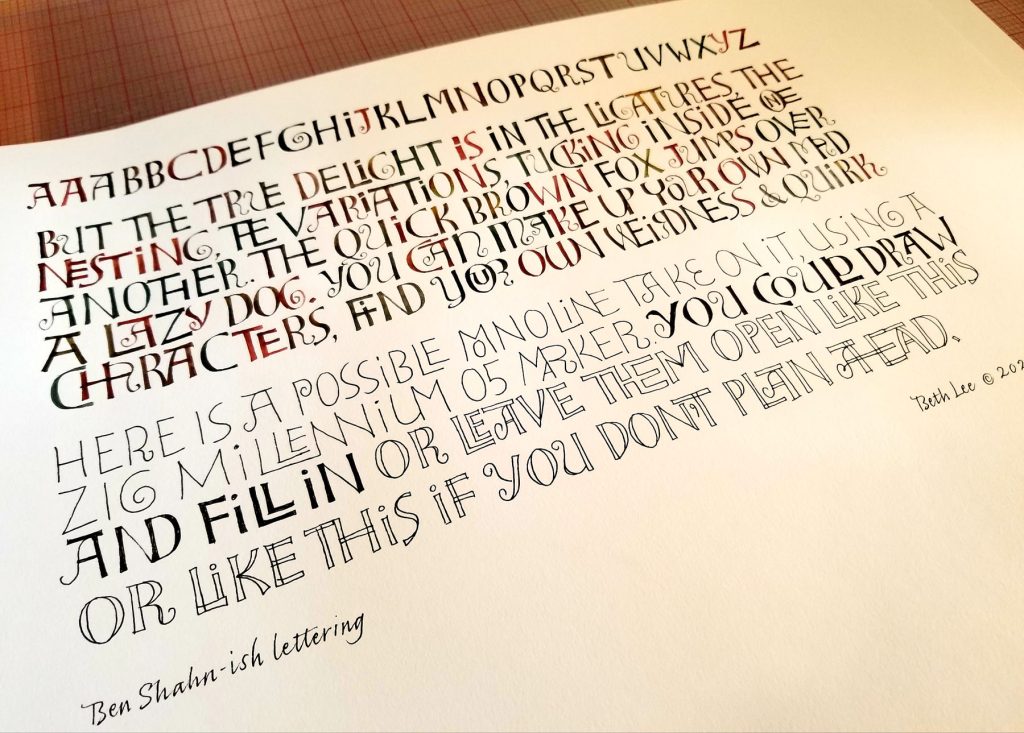
Courtesy: Beth Lee
Conclusion
Ben Shahn’s work went beyond basic aesthetics and acted as a voice for the oppressed, a plea for justice, and a reminder of the resilience of the human spirit. He became an advocate for social realism due to his innate empathy for immigrants and the marginalised. His continued confidence in the ability of art to enlighten and sensitise the public is evidence of the lasting relevance of his work and serves as a reminder of the significance of using artistic expression to challenge oppression and injustice.
Read Also:

